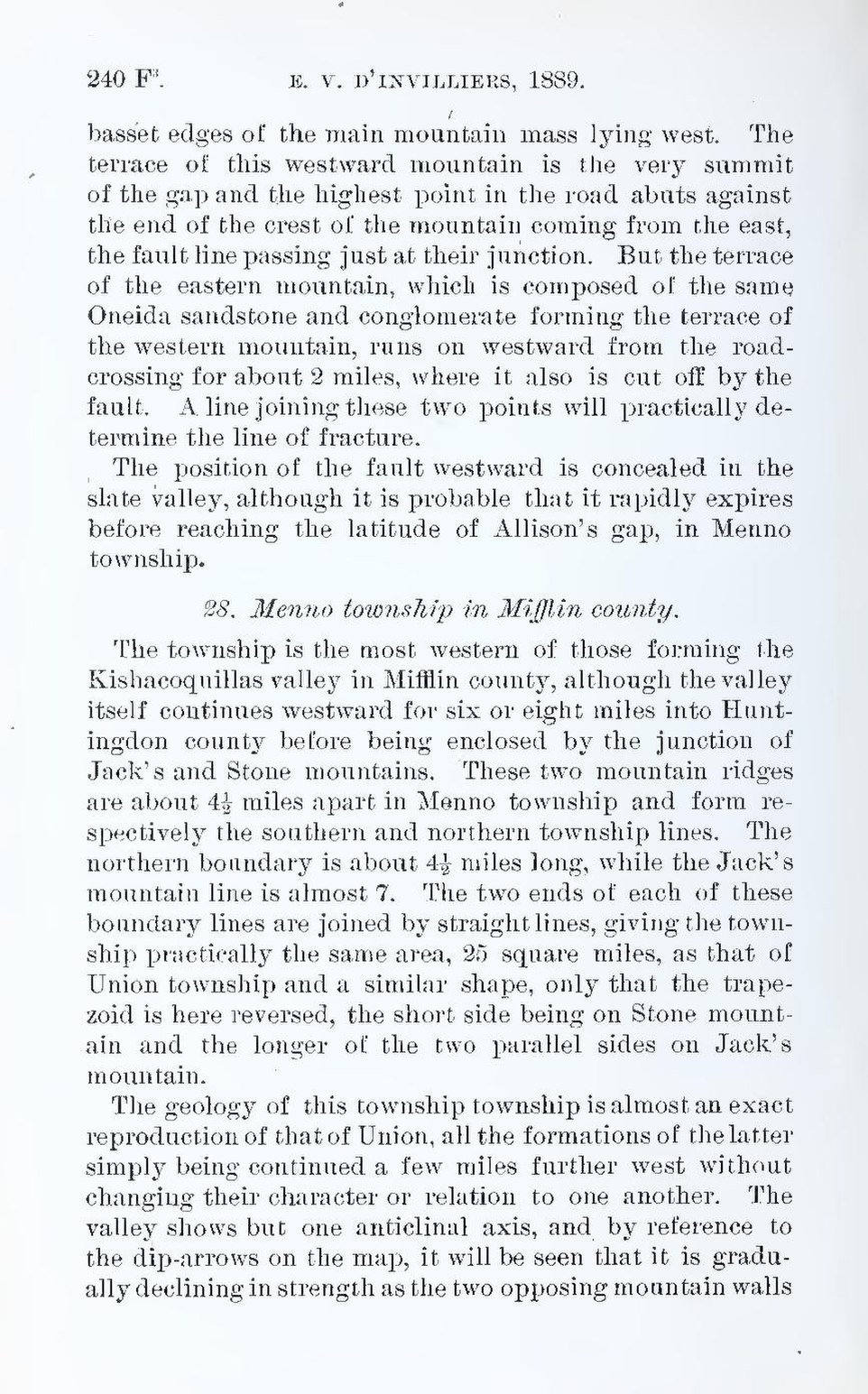basset edges of the main mountain mass lying west. The terrace of this westward mountain is the very summit of the gap and the highest point in the road abuts against the end of the crest of the mountain coming from the east, the fault line passing just at their junction. But the terrace of the eastern mountain, which is composed of the same Oneida sandstone and conglomerate forming the terrace of the western mountain, runs on westward from the road-crossing for about 2 miles, where it also is cut off by the fault. A line joining these two points will practically determine the line of fracture.
The position of the fault westward is concealed in the slate valley, although it is probable that it rapidly expires before reaching the latitude of Allison’s gap, in Menno township.
28. Menno township in Mifflin county.
The township is the most western of those forming the Kishacoquillas valley in Mifflin county, although the valley itself continues westward for six or eight miles into Huntingdon county before being enclosed by the junction of Jack’s and Stone mountains, These two mountain ridges are about 4½ miles apart in Menno township and form respectively the southern and northern township lines. The northern boundary is about 4½ miles long, while the Jack’s mountain line is almost 7. The two ends of each of these boundary lines are joined by straight lines, giving the township practically the same area, 25 square miles, as that of Union township and a similar shape, only that the trapezoid is here reversed, the short side being on Stone mountain and the longer of the two parallel sides on Jack’s mountain.
The geology of this township township is almost an exact reproduction of that of Union, all the formations of the latter simply being continued a few miles further west without changing their character or relation to one another. The valley shows but one anticlinal axis, and by reference to the dip-arrows on the map, it will be seen that it is gradually declining in strength as the two opposing mountain walls
